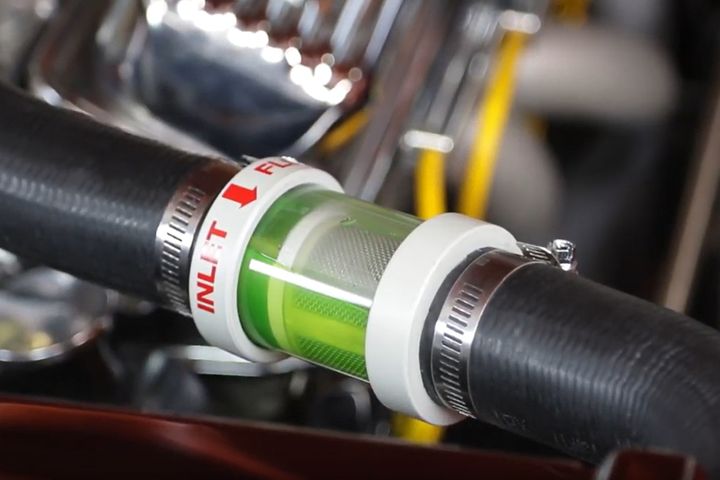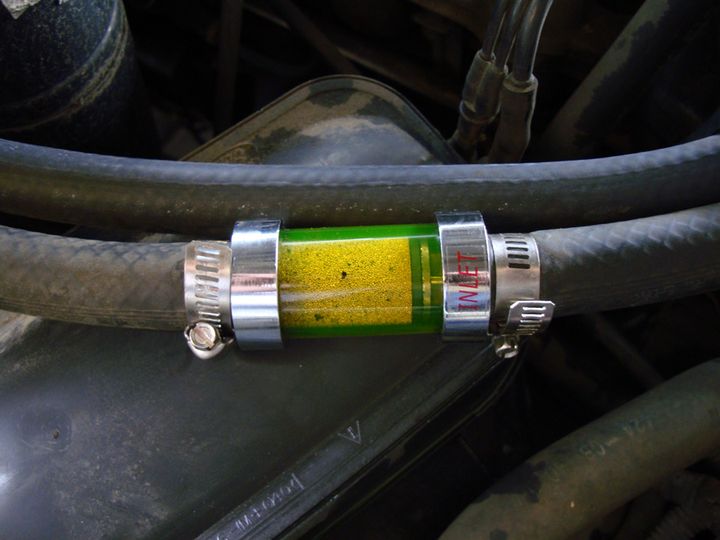


The coolant filter plays a crucial role in maintaining the optimal performance and longevity of your vehicle's cooling system. This often-overlooked component acts as a guardian, protecting the intricate network of components that regulate engine temperature and prevent overheating. In this comprehensive guide, we will explore the functions, types, importance, selection criteria, installation, maintenance, and the latest advancements in coolant filter technology.

The cooling system is a critical component of any vehicle, responsible for dissipating the immense heat generated by the engine during operation. Failure to maintain proper cooling can lead to catastrophic consequences, including engine damage, overheating, and potential breakdowns. The coolant filter is an indispensable component that preserves the integrity and longevity of the cooling system.
A coolant filter is a specialized filtration device designed to remove contaminants and debris from the coolant, the liquid that circulates through the cooling system. By filtering out these impurities, the coolant filter helps maintain the chemical balance of the coolant, ensuring optimal heat transfer and protection for the engine and other critical components.
| Filter Type | Description | Suitable Coolant Types |
|---|---|---|
| Filters with Supplemental Coolant Additives (SCA) | Contains solid additive pellets or tablets that slowly dissolve into the coolant, replenishing essential additives | Conventional ethylene glycol or propylene glycol coolants |
| Blank Filters | Do not contain any supplemental coolant additives | Extended-life coolants (ELCs) or fully-formulated premixed coolants |
Removing contaminants from the coolant
Maintaining proper coolant chemistry
Preventing abrasive wear and scale formation
Protecting cooling system components
The importance of coolant filters cannot be overstated, as they play a vital role in:
Extending the lifespan of the cooling system
Maintaining optimal cooling performance
Preventing premature wear and damage to critical components
Ensuring the coolant retains its protective properties
Regular coolant filter replacement is a simple and cost-effective maintenance task that can help prevent more significant and expensive cooling system issues down the line.
Choosing the correct coolant filter is crucial to ensure proper cooling system performance and protection. Consider the following factors:
| Factor | Importance |
|---|---|
| Compatibility with Coolant Type | Using the wrong filter type can lead to issues like silicate dropout or corrosion |
| Coolant Flow Rate and Pressure Compatibility | Incompatible filters can restrict coolant flow or cause filter failure |
| Filter Material and Design | Impacts filtration efficiency, contaminant holding capacity, and service life |
Proper installation and maintenance are essential for optimal performance and longevity of the cooling system.
Follow the manufacturer's instructions carefully
Pay attention to details like torque specifications and gasket replacement
Ensure the filter is securely mounted and free from obstructions
Consult your vehicle's owner's manual or service schedule for the specific replacement interval recommended for your vehicle. Factors like severe operating conditions or heavy-duty use may necessitate more frequent replacements.
Inspect for leaks and damage regularly
Monitor coolant condition and additive levels
Follow proper coolant replacement intervals
Use high-quality coolant and filters
Address cooling system issues promptly
As technology evolves, coolant filter manufacturers are introducing innovative features and capabilities:
Integrated coolant condition monitoring systems
Remote monitoring and diagnostics with data logging capabilities
Augmented reality (AR) guided maintenance and installation
Virtual reality (VR) training simulations for technicians
These advancements enhance cooling system performance, streamline maintenance processes, and improve technician training.
The coolant filter is an essential component in maintaining the health and longevity of your vehicle's cooling system. By selecting the right filter, following proper installation and maintenance procedures, and staying up-to-date with the latest advancements, you can maximize the lifespan and reliability of your cooling system. Investing in this unsung hero will ensure a smooth and reliable driving experience for years to come.
The primary function of a coolant filter is to remove contaminants and debris from the coolant, maintaining the chemical balance and ensuring optimal heat transfer and protection for the engine and other critical components.
The two main types of coolant filters are: 1) Filters with Supplemental Coolant Additives (SCA) and 2) Blank Filters without additives.
Using the wrong coolant filter type can lead to issues like silicate dropout (over-concentration) or corrosion and liner pitting (under-concentration), which can damage the cooling system components.
Coolant filters should be replaced at recommended intervals, typically every 1-2 years or based on the manufacturer's recommendations, to ensure optimal performance and protection of the cooling system components.
When selecting a coolant filter, consider factors such as compatibility with the coolant type, coolant flow rate and pressure compatibility, and the filter material and design.
Proper installation techniques include following the manufacturer's instructions carefully, paying attention to details like torque specifications and gasket replacement, and ensuring the filter is securely mounted and free from obstructions.
Maintenance tips for coolant filters include inspecting for leaks and damage regularly, monitoring coolant condition and additive levels, following proper coolant replacement intervals, using high-quality coolant and filters, and addressing cooling system issues promptly.
Some advanced coolant filter technologies include integrated coolant condition monitoring systems, remote monitoring and diagnostics with data logging capabilities, augmented reality (AR) guided maintenance and installation, and virtual reality (VR) training simulations for technicians.
Addressing cooling system issues promptly is important because failure to maintain proper cooling can lead to catastrophic consequences, including engine damage, overheating, and potential breakdowns.
Using the wrong coolant filter type can lead to issues like silicate dropout (over-concentration) or corrosion and liner pitting (under-concentration), which can damage the cooling system components and potentially cause engine failure.

Miguel started tinkering with car radios as a teenager, fascinated by the intricate dance of wires and circuits. This passion led him to pursue a career as an automotive electrician. For the past 10 years, Miguel has tackled everything from flickering headlights to mysterious electrical gremlins. He thrives on troubleshooting electrical problems and enjoys sharing his knowledge to empower car owners to understand their vehicles better.









